Muscle Pain in the Jaw Area
What is Muscle pain in the jaw area?
Muscle pain in Jaw is a debilitating disorder which is affecting your capability to eat & speak.
This jaw pain radiates to other regions of the face.
This jaw pain appears due to sinus infections, problems with the blood vessels or nerves, toothaches, or other conditions.
But most types of jaw pain result from temporomandibular joint disease.
In many cases, jaw pain does not require immediate medical attention, but sometimes, it signifies a more serious underlying condition that requires treatment.
This pain is terminated by to RICE principle & physiotherapy treatment.
What are the causes of jaw muscle pain?
A person is encountering jaw pain because of an injury & strain in the jaw muscle.
Jaw pain is a consequence due to physical injuries, infections, injury to the nerves or blood vessels & several other causalities.
Temporomandibular joint and muscle disorder (TMD)
TMDs are the most typical cause of jaw pain, involving nearly 10 million AmericansTrusted Source. TMD is also occasionally known as TMJ. The temporomandibular joints are the hinge joints on per side of your jaw.
Many things can lead to TMD jaw pain. It’s also possible to experience TMD due to many causes at the same time.
Causes of TMD include:
- pain from the muscles that maintain jaw movement
- damage to the jaw joint
- extra stimulation of the jaw joint
- a replaced disc that generally supports and cushions the motions of the jaw
- arthritis of the defensive disc that cushions the jaw joint
Damage to the jaw joint or the muscles that maintain your jaw motion can be caused by several factors, including:
- grinding your teeth at night
- involuntarily clenching your jaw due to pressure and anxiety
- trauma to the jaw joint, such as obtaining hit in the face while playing sports.
There are also less typical causes of jaw pain. These include:
- Trigeminal neuralgia
- Trigeminal neuralgia is a condition that’s most generally caused by nerve contraction on the trigeminal nerve that supplies sensation to a large part of the face, involving the upper and lower jaws.
Heart attack
A heart attack can lead to pain in other areas of the body but the chest, like the arms, back, neck, and jaw. Women in individual may experience jaw pain on the left side of their faces during a heart attack.
Call 911 directly and ask to be taken to the hospital if you experience the following symptoms:
- chest pain
- shortness of breath
- sweating
- nausea
- feeling faint
Dental surgery:
Sometimes jaw pain arises due to dental surgery because it may take time to heal from a procedure.
Arthritis:
Osteoarthritis & other types of arthritis happens in the smooth interface between the joints & finally the bones.
Bone aches lead to jaw pain.
Inflammatory conditions:
Some inflammatory diseases like synovitis, rheumatoid arthritis & psoriatic arthritis which is created by inflammation in the joints.
If these conditions affect the jaw bone joint it leads to jaw pain.
Dental conditions:
Some dental diseases like gum disease, tooth gaps, cavities, and injured teeth & abscesses.
These all circumstances lead to jaw pain.
Neuropathic pain:
This type of pain happens when the nerves become injured & send pain signals to the brain.
These symptoms are continuous & increase from time to time.
Examples of this neuropathic pain include trigeminal neuralgia, postherpetic neuralgia & cancer-related pain.
Vascular conditions:
Sometimes when happening to a problem with the vascular system is direct to jaw pain.
Some examples of vascular conditions include temporal arteritis / giant cell arteritis & angina.
Temporal arteritis:
These routes stay on either side of the head in the temple region
When it becomes too inflamed it leads to headaches & jaw pain.
This condition also put a danger to a person’s vision.
Angina:
This condition forms when the heart does not get sufficiently oxygen-rich blood which is usually due to a coronary artery blockage.
This condition is created by chest pain & jaw pain.
When you suffer from angina it is also the risk of undergoing a heart attack.
Osteomyelitis:
It happens in rare cases & occurs in an infection called osteomyelitis which involves the jaw bone & associated tissues.
It is a rare difficulty of dental surgery.
Cluster headaches:
It is naturally created in pain behind & around one of the eyes, but this pain also radiates to the jaw pain.
Cluster headaches = it is one of the considerable painful types of headache.
Sinus problems:
Sinuses are air-filled cavities that are discovered close to the jaw joint.
When the sinuses become contaminated with a germ like a virus or a bacterium.
This is given to result in extra mucus which puts pressure on the jaw joint, generating pain.
Some other conditions which are created by jaw & facial pain include:
- Obstructive sleep apnea
- Sinusitis
- Salivary gland disorders
- Autoimmune diseases, like as lupus
- Ear infections
- Stress, fatigue, and a lack of sleep
- Fibromyalgia
- Some mental health diseases
Vascular conditions
Sometimes, a problem with the vascular system can cause jaw pain. Some examples of vascular conditions contain temporal arteritis, giant cell arteritis, and angina.
In temporal arteritis, the arteries on either side of the head — in the temple area — become inflamed, resulting in headaches and jaw pain. This disease may also put a person’s vision at risk.
Angina can create a trusted Source when the heart does not get enough oxygen-rich blood, generally due to a coronary artery blockage. It can induce chest pain as well as jaw pain. A person who has angina is also in danger of experiencing a heart attack.
Signs & symptoms of jaw muscle pain
- You feel pain in the face & jaw.
- You are heard clicking, popping & grinding sounds during the opening or closing of the jaw.
- The feeling of tooth grinding or clenching during sleep or times of moving stress
- You feel difficulty chewing or opening your mouth.
- Sometimes feeling a burning sensation in my mouth.
- Sensitivity in teeth.
- You feel joint & muscle tenderness.
- You are encountering a limited range of motion – ROM.
- Sometimes happen to joint alignment issues.
- You feel headaches with & without ear pain which is also the force behind the eyes.
- Sometimes feeling of dizziness & vertigo.
How do you diagnose jaw muscle pain?
- To analyze jaw pain, a doctor asks a question about the symptoms & causes & tries to know about the leads of the muscle pain.
- Then the doctor accomplishes a physical examination & observes swelling & redness.
- Then the doctor is suggest a blood test & an imaging study.
- In some cases of pain, the doctor is also providing psychological & psychiatric screening.
In which condition do you require to contact a doctor in an emergency?
- Jaw pain does not consistently require medical attention, but you are contacted by to doctor when you feel to :
- Home treatments do not help to reduce your jaw pain.
- When your jaw pain is interrupting your daily routine.
- When your jaw starts to create a clicking & popping sound when moving the jaw.
- If you feel pain happening in the neck & upper back.
- When you also feel eye pain, vision modifications & headaches.
- When happen to feel tinnitus & ringing in the ears with jaw pain.
- If you are suffering from dental issues like infection.
Treatment for jaw muscle pain?
Treatment of jaw pain relies on the cause of the pain.
RICE Principles
When you feel pain in the jaw muscle doctor is recommended the RICE principal home treatment or primary treatment.
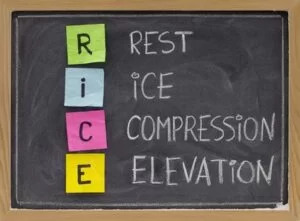
- R – rest = When you feel muscle discomfort doctor has advised you to your rest for sometimes form of activities normals do not do any mouth activities & eat soft & liquid foods or avoid eating crunchy & chewy foods that free muscle pain.
- I- ice = Put the ice in a plastic bag &wrap it in a thin cloth & use it on your face for 10 minutes.
- Then rest for 10 minutes, before reapplying the ice.
- C- compression = you are used to braces to straighten your teeth, but use them too generally because if it evolves too painful.
- E- elevation = it is not possible for jaw muscle because it raises the pain but always use the soft pillow while sleeping.
Medical treatment
Most doctors will first suggest non-invasive treatment methods for your jaw pain. If you still have jaw pain after attempting these methods, you should talk to your dentist. You may require further interventions to find consolation for your pain.
Mouthguard: A mouthguard is a plastic dental protection worn on your upper or lower teeth that’s custom-fitted for your mouth. Although you can buy one at a pharmacy, a dentist will make you one that may fit nicely and last longer. Wearing one at bedtime can support stop you from unconsciously rubbing your teeth.
Muscle relaxers: If your pain doesn’t react to the mouthguard, your dentist may specify muscle relaxers to reduce jaw tension. However, these don’t always support people with TMD.
Botox injections: More invasive therapy procedures include Botox cosmetic injections. When injected into the jaw muscles, the botulinum toxin discovered in Botox may keep your jaw muscles from clenching, maybe helping to reduce jaw pain due to TMD. These injections will last for months at a time and may need re-injection later.
Jaw surgery: In very rare examples, a doctor will suggest jaw surgery to correct TMD problems. This treatment is generally reserved for people with extreme pain that’s due to structural issues in the jaw joint.
A doctor prescribes some medications:
- Guidance to antibiotics medication when your pain is a cause of bacterial infection.
- Sometimes suggestions to muscle relaxants.
- The doctor is advised to oral, spray & topical medicines for pain relief.
- Advice to antiviral treatment to treat viral infections like herpes zoster.
- Advice to use mouth guardians like a mouthguard.
- It is a plastic dental protector which is worn on your upper & lower teeth that is custom-fitted for your mouth.
- Wearing this mouthguard at bedtime is the benefit to stop you from unconsciously rubbing your teeth.
Dental treatment :
- The doctor is recommended some dental treatment when your pain happens due to dental causes include to:
- Tooth extraction.
- Root canal therapy.
- Heat or cold treatment.
Physiotherapy treatment for jaw muscle pain
When the muscle pain is not reduced after the home treatment & pain medicine then the doctor has recommended physiotherapy treatment to remove muscle pain.
Physiotherapy treatment is help you reduce pain, swelling, spam & tightness of muscle pain.
Physiotherapy therapy includes massage, electrotherapy therapy & exercise therapy.
Massage:
When the trigger & tender points are present in the muscle pain area therapist is recommended to massage treatment release to the muscle pain.
Use your index & middle finger & push the painful areas of your jaw, like the area right before your ear where your jaw joints meet.
Rub & massage in a circular movement for 5 to 10 rotations, then open your mouth & repeat this exercise.
Do the massage on the muscles on the side of your neck which is help to reduce tension.
Electrotherapy treatment:
After the RICE principle, pain medicine & massage if the muscle pain is not reduced then used Electrotherapy treatment for release to muscle pain.
To relieve the swellings, spasms & pain therapist is recommended to you for electrotherapy treatment.
In electrotherapy, the treatment therapist is used to many devices.
When the trigger & tender moments are present therapists are advised & to apply US = ultrasound therapy for the free of muscle pain.
This treatment is applied with the use of gel & applies for 5 to 10 minutes on the site of pain.
This treatment helps you remove pain & swelling.
Relieve pain therapist is applied to TENS = Transcutaneous Electrical Nerve Stimulation & IR = Infrared therapy on the area of pain.
IR = Infrared therapy is the hot treatment for release to spam in the area of pain & it is an innovative treatment that is used to control acute or chronic pain.
TENS = Transcutaneous Electrical Nerve Stimulation is applied with the support of gel & electrodes on the area of pain.
This treatment is applied for 10 minutes to the area of pain.
You are also used to a mouth opener device & ice cream stick for the exercise of the opening of the jaw.
Lifestyle techniques to reduce jaw pain long-term
Stress reduction: Try stress-relieving methods to reduce jaw clenching. These could include:
- yoga
- journaling
- meditation
- These activities may help you decrease your jaw pain if it’s caused by stress.
Avoid chewy foods: Foods that are chewy, tough, or crunchy can place too awesome a strain on your jaw joint and lead to pain and distress later. Foods to avoid include:
- apples
- beef jerky
- chewing gum
- ice
Avoid caffeine: Your morning cup of joe could be donating to your muscle tension, which can be improved by caffeine. Avoiding large quantities of caffeinated coffee and tea may support decrease your jaw pain over time, but you may initially feel muscle tension from caffeine leaving when cutting it out of your diet.
How to treat jaw muscle pain at home?
Adopting a soothing diet that controls excessive jaw movement.
Do the massage at home on the pain site.
You are used to braces to straighten your teeth but use to generally because if they become too painful.
Many other ways to relieve jaw pain
Apply heat or cooling packs
Apply moist heat or cold, whichever feels better, to the joints or muscles that are hurting. Heat or ice applications used for 5 to 10 minutes three or four times per day can relieve joint or muscle pain and comfort the muscles. For heat, microwave a watery towel for approximately 1 minute or until the towel is warm. You can also cover a moist hot towel around a hot water bottle to keep it warm longer. For cold, use ice covered in a face cloth. Keep ice on the hurting area only until you first feel some numbness.
Watch what you eat
Eat a soft pain–free diet. ignore hard foods, such as French bread, and avoid chewy food such as steak and toffees. Cut fruit and boiled vegetables into small pieces. Do not chew gum. Take calcium and magnesium as a supplement, 600mg calcium to 300mg magnesium as nicely as a multivitamin.
Chew on both sides
Chew your food on both sides at the same time or on alternate sides to relieve the strain on one side. Chew with your back teeth instead of biting with your front teeth.
Stop clenching
Avoid oral habits that put a strain on the jaw muscles and joints. These contain teeth clenching or grinding (bruxism), teeth touching or relaxing together, biting cheeks or lips, tongue pressing against teeth, jaw tensing, biting things e.g. a pen, and other habits. If you do these while working or exercising be knowledgeable and change your habits. Of course, you can’t hold it if you clench in your sleep.
Relax your muscles
Keep your tongue down and rested, teeth apart, and jaw muscles relaxed. You must avoid clenching and rubbing your teeth. You should closely observe your jaw positions during the day (waking hours) so that you keep your jaw in a calm, comfortable position. This affects resting the tongue lightly on the floor of the mouth, permitting the teeth to come apart and relaxing the jaw muscles.
Relax in general
Learn and practice relaxation and abdominal breathing. This will help decrease your reactions to stressful life events.
Figure it out
Determine the events that trigger the pain. Use a pain diary to check activities that exacerbate the pain and change your behavior accordingly.
Sleep well
Obtain a good night’s sleep. Manage your sleep atmosphere. Decrease light and noise and lie on a relaxing mattress. For parents of babies, plan an infrequent night when you are not responsible for the baby. Decline stimulating activities in the late evening (computer work, running, etc). Avoid resting on your stomach. Rest on your side or back. Always wear your device at night if advised to do so.
Cut the coffee
Avoid caffeine. Caffeine can trouble sleep and increase muscle tension. Caffeine or caffeine-like medications are in coffee, tea, Cola, and chocolate. Note that some decaffeinated coffee has up to half as much caffeine as normal coffee. You can now purchase decaffeinated tea. Waitrose or M&S do an extremely nice version.
Stop making it worse
Avoid movements that strain your jaw, such as relaxing your jaw on your hand, extreme singing, or use of musical instruments, if they stimulate the pain. Also avoid activities that involve the wide opening of the jaw (yawning, taking large bites, prolonged dental treatments, etc.) for a while until the pain has been reduced.
Use medication
The use of anti-inflammatory and pain-reducing drugs like ibuprofen, paracetamol, or aspirin to relieve joint and muscle pain can benefit but should be limited.
Exercise therapy for jaw muscle pain :
After following the RICE principle for 2- 3 days at home & primary therapy & the help of pain medicine, you feel removed from the pain.
When you feel too relaxed & release from your muscle pain then the physiotherapist is recommended to you exercise therapy reduce to muscle deficiency & tightness.
The exercise treatment for muscle pain contains Stretching & strengthening Exercises.
Stretching exercise benefits reduce muscle tightness as well as strengthening Exercise is help you reduce muscle weakness.
Stretching exercise:
After the follow of Electrotherapy for 2-3 days for the release of muscle pain by the physiotherapist then the therapist is suggested to stretch for free muscle tightness.
This stretching is used when your pain is freed & when you feel relaxed:
- Neck muscle Stretch
- Active Jaw Stretching Exercise
- Passive Stretching Exercise

Neck muscle Stretch:
- Stretching the neck muscle is another way to keep good posture & relieve tension in your neck or jaw muscles.
- First, bend your head forward then move backward.
- Try to move your head to the left & then to the right.
- Slowly bend your head or pull your ear to your shoulder while must keep your shoulder joint as flexible, as you can.
- Stop this stretching if you feel any discomfort.
- Repeat this exercise on the other side.
- Maintain this stretching position for 20 to 40 seconds & repeat 3 times.
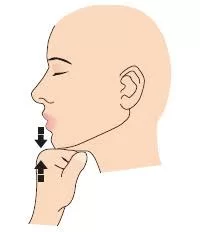
Active Jaw Stretching Exercise:
This stretching exercise is stretch your jaw muscles, but should not deliver pain when you experience pain, then complete this stretching very carefully.
- First, maintain your head stable & open your mouth as wide as feasible you & maintain for 10 seconds.
- Attempt to move your lower jaw to the right & maintain for 5 seconds.
- Then move your lower jaw to the left & maintain for 5 seconds.
- After that move, your lower jaw in a circle to the one side means left then moving your lower jaw in a circle to the right means another side.
- Repeat it 5 times & do these 3 times per day.
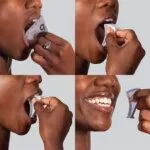
Passive jaw Stretching Exercise
This stretching exercise uses to lightly stretch your jaw muscles to reduce pain.
- First, place your thumb on the top teeth which are discovered in the middle of your jaw.
- Then place the index finger of your other hand on the lowest teeth which are discovered in the middle of your jaw.
- Try to empty your mouth as wide as you feel relaxed & using your fingers to use extra resistance.
- Maintain this stretching position for 5 to 10 seconds.
- Prevent this stretching exercise when you feel any pain.
- Repeat this exercise 5 times.
Strengthening Exercises:
- After the follow of Electrotherapy & massage for 2 -3 days to remove muscle pain by the physiotherapist then the therapist suggested to you do strengthening exercises for muscle weakness.
- This strengthening exercise is always recommended when you feel to dismiss pain & when you feel comfortable.
This all-strengthening exercise helps you with muscle weakness & pain.
- Relaxed jaw exercises
- Goldfish exercises – partial opening
- Goldfish exercises – full opening
- Chin tucks
- Resisted opening of the mouth
- Resisted closing of the mouth
- Tongue up
- Side-to-side jaw movement
- Forward jaw movement
- Relaxed jaw exercises:
- This exercise is accomplished in a sitting position.
- First, rest your tongue slowly on the top of your mouth behind your upper front teeth.
- Try to allow your teeth to come apart while resting your jaw muscles.
- Perform 10 times in 1 session & 3 sessions each day.
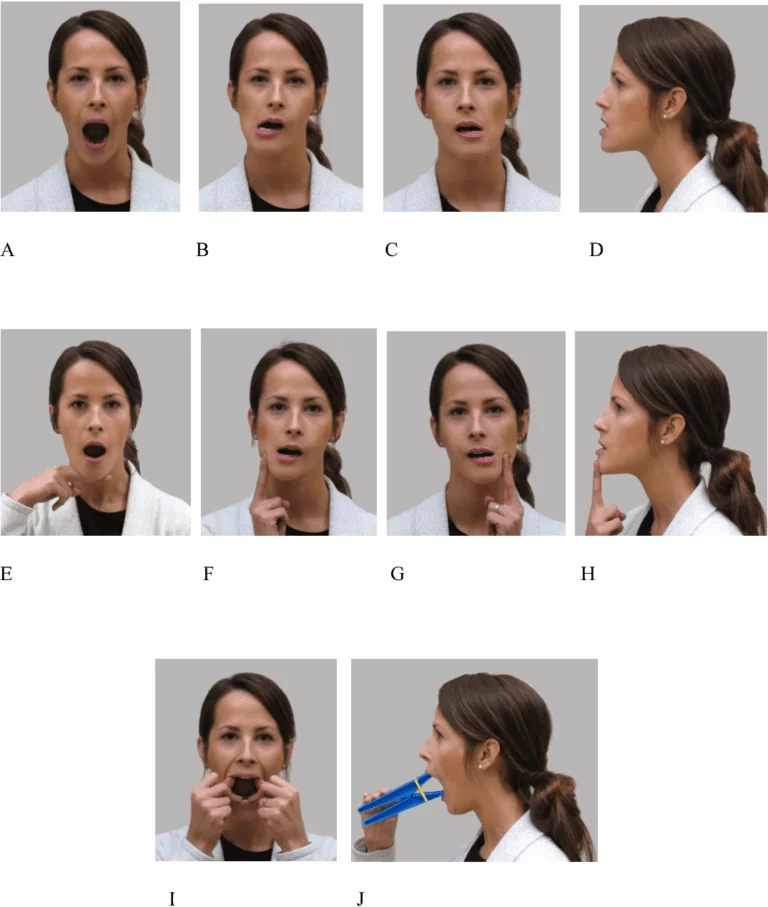
Goldfish exercises – partial opening:
- This exercise is accomplished in a sitting position.
- First, place your tongue on the roof of your mouth & put one finger in front of your ear.
- Then place your middle & pointer fingers on your chin.
- Try to drop your lower jaw midway & then close it.
- It is created to mild opposition but stops when you feel pain.
- For an interpretation of this exercise, you place one finger on each TMJ.
- Try to drop your lower jaw midway & closed it again.
- Do this exercise done 6 times in one set & do 6 sets each day.
Goldfish exercises – full opening:
This exercise is accomplished in a sitting position.
Must be holding your tongue on the roof of your mouth.
Put one finger on the TMJ & another finger on your chin.
Try to drop your lower jaw fully & back.
For an interpretation of this movement, you put one finger on each TMJ & fully drop your lower jaw & back.
Do this 6 times in one set & do 6 sets each day.
Chin tucks:
This exercise is accomplished in a sitting position.
With your shoulder joint back & chest up.
Then pull your chin straight back & making a “double chin.”
Maintain this exercise for 5 seconds & repeat 10 times in 1 set.
perform 3 sets each day.
Resisted opening of the mouth:
This exercise is accomplished in a sitting position.
First, put your thumb under your chin.
Then try to open your mouth gradually & pushing gently against your chin for antagonism.
Maintain this exercise for 3 to 6 seconds & close your mouth gradually.
Perform 10 times in 1 session & 3 sessions each day.
Resisted closing of the mouth:
This exercise is accomplished in a sitting position.
First Squeeze your chin with your index & thumb in one hand.
Try to close your mouth as you place gently pressure on your chin.
This exercise permits you to strengthen your muscles which helps you chew.
Perform 10 times in 1 session & 3 sessions each day.
Tongue up:
This exercise is accomplished in a sitting position.
First with your tongue connecting the roof of your mouth.
Try to slowly open & close your mouth.
Perform 10 times in 1 session & 3 sessions each day.
Side-to-side jaw movement:
First put a ¼-inch thing, such as a stacked tongue depressor, between your front teeth.
Try to gradually move your jaw from side to side.
This exercise becomes easier & improves the thickness of the thing between your teeth.
Perform 10 times in 1 session & 3 sessions each day.
Forward jaw movement:
This exercise also needs a thin object.
Then gently maintain a thing that is about one-quarter of an inch thick between the front teeth.
Try to move the jaw ahead so the bottom teeth are in front of the top teeth.
This exercise becomes easier than returning the object with a thicker one.
Perform 10 times in 1 session & 3 sessions each day.
What is the long-term goal for this jaw muscle pain?
Some long-term goal that also supports you with jaw muscle pain :
- Always take care of routine dental care.
- You must relieve stress by trying meditation, yoga & other types of exercise.
- Always do the massage on the jaw region which is help to relax the muscles & improve blood flow.
- On a daily base use a mouthguard to stop the teeth from rubbing together.
- Always adopt the correct posture & not bear a heavy bag for too long time on one shoulder joint.
Which foods can help with jaw muscle pain?
A person with jaw pain and distress should follow a healthy diet to confirm that they get the proper nutrients. However, they may require to avoid chewy, hard, or crunchy foods.
Some suitable dietary options include:
- simple yogurt
- smoothies
- soaked or cooked oats
- soft fruits
- cottage cheese
- scrambled eggs
- smashed vegetables
- fish
- lentil soup or chicken broth
- Fresh fruits and vegetables are perfect choices, as they supply all the nutrients a person needs.
What are complications of the jaw muscle pain?
This complication appears when you are not pursuing medical attention for jaw pain.
The difficulties depend on the cause & other factors involving the treatment process.
Some possible complications of jaw muscle pain include:
- Emotional distress
- Infections
- Dental difficulties
- Constant pain
- Surgical difficulties
- The defeat of appetite due to pain, and problems in chewing & swallowing.
Prevention
If a person has already undergone jaw pain, following these tips may help control it from returning — at least during the healing phase:
- consuming soft or liquid foods, such as soup or pasta
- avoiding eating crunchy or chewy foods, such as gum
- grabbing small bites of food
Some long-term strategies include:
- seeking routine dental care
- reducing stress by attempting meditation, yoga, or other types of exercise
- massaging the jaw area to relax the muscles and improve blood flow
- utilizing a mouthguard to stop the teeth from grinding together
- adopting the correct posture and not having a heavy bag for too long on one shoulder.
FAQ
What does it indicate when your jaw muscle is in pain?
Jaw pain, which sometimes radiates to other regions of the face, is a common problem. It can form due to sinus infections, toothaches, issues with the blood vessels or nerves, or other circumstances. Most types of jaw pain result from temporomandibular joint disease.
How do you massage your jaw muscles?
Put 2 to 3 fingers on the muscles below your cheekbones. If you clench your teeth, you should feel the muscles tense underneath those fingers. Press into the muscles and maintain that pressure for 6 to 10 seconds. Hold your jaw relaxed and repeat in another tender or tight part of your cheek.
Does jaw muscle pain go out?
For most individuals, pain in the area of the jaw joint or muscles does not signal a severe problem. Generally, distress from these conditions is rare and temporary, often happening in cycles. The pain finally goes away with little or no treatment. Some people, however, create significant, long-term symptoms.
Can TMJ come on suddenly?
While a TMJ condition can develop for any number of causes, many everyday happenings can lead to sudden flare-ups.
Can jaw muscles get knots?
Trigger points are hyper-tensed muscles ( muscle knots) that generate jaw aches and pains. “When it comes to TMD, we can charge the pain on the masseter muscle, which guards the jaw over your teeth.
What does a strained jaw muscle feel like?
The pain from a pulled jaw muscle may feel like a continuous or intermittent dull ache in front of the ear, in the ear, on the lower jaw and face, and over the temples.

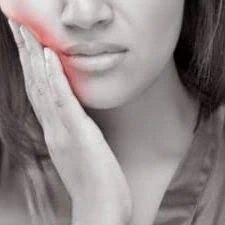

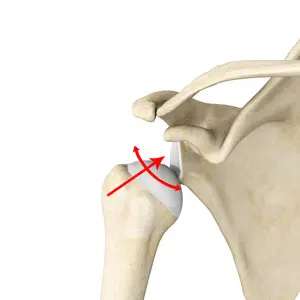

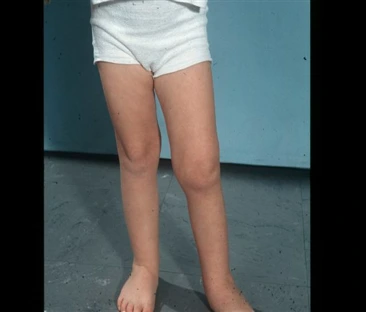
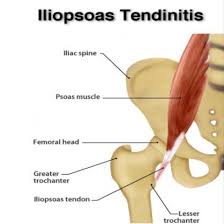
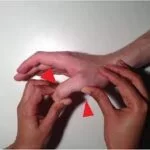
One Comment